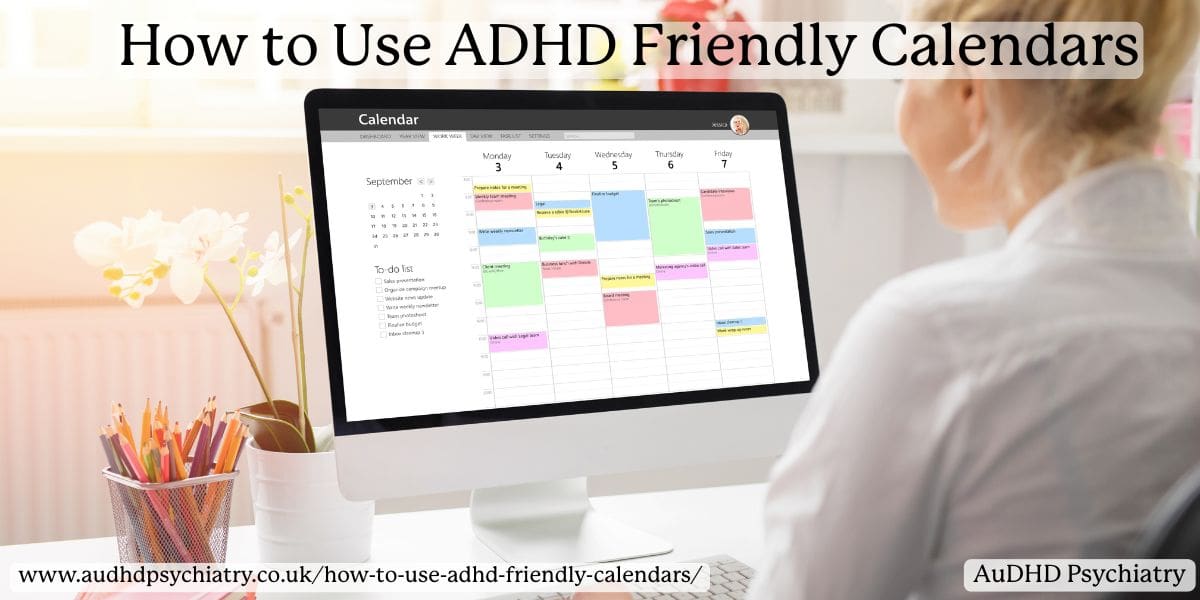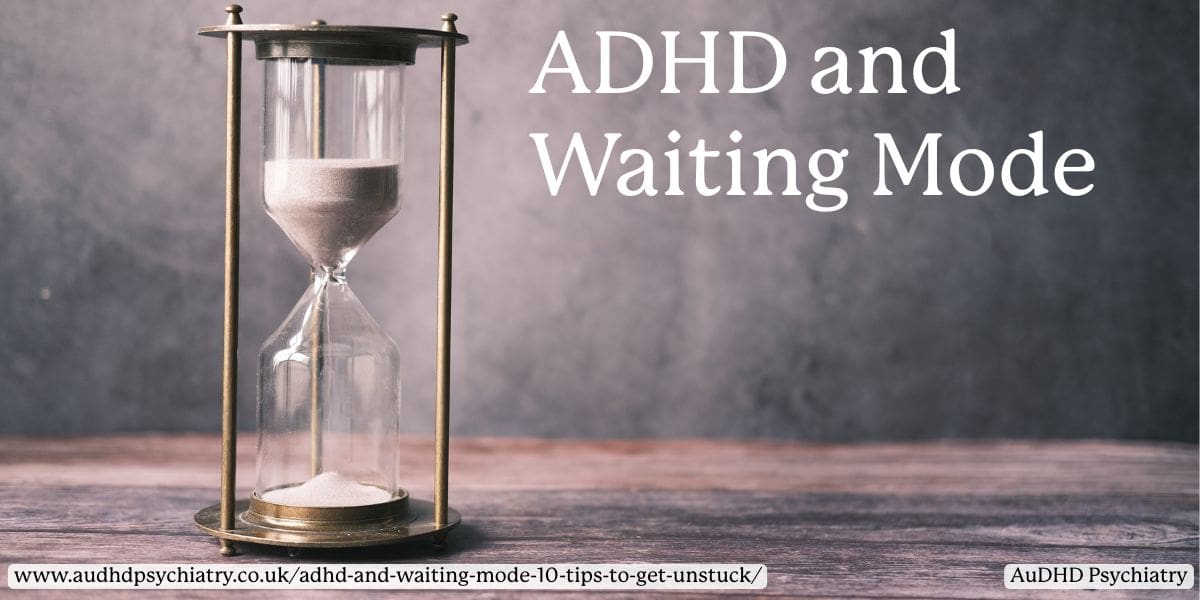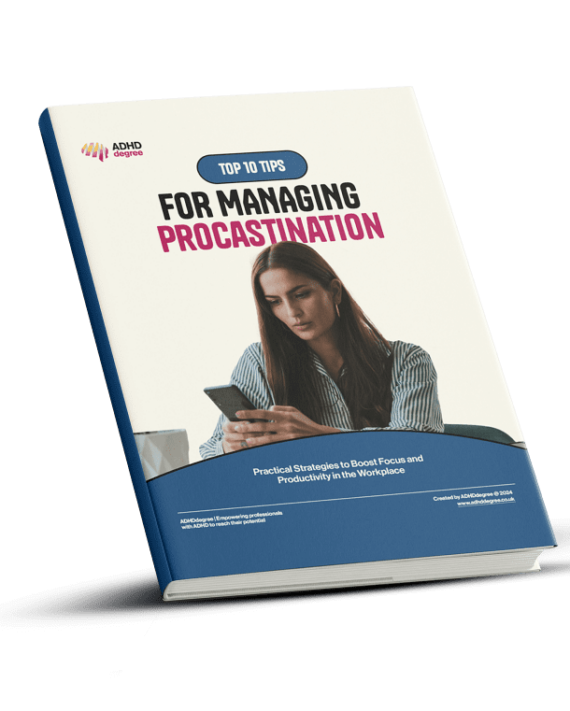How to Use Visual Planners and ADHD-Friendly Calendars
If every planner you’ve ever bought ends up gathering dust, you’re not alone. Many people with ADHD find that traditional calendar systems fail to support how their brains actually work. Common challenges such as time blindness, task overload, and inconsistent focus often make it difficult to stick with rigid scheduling tools designed for neurotypical users.
An ADHD-friendly planner, however, offers a more adaptable solution. With the right system in place, it becomes easier to organise daily tasks, manage priorities, and maintain structure without added stress. These tools are designed to provide clarity, support executive functioning, and reduce the mental load of remembering everything at once.
In this guide, we’ll explore how to choose the right calendar for your needs, set it up effectively, and use it in a way that complements your daily life. Whether you prefer paper, digital apps, or a combination of both, the goal is the same: to create a system that actually works for you.
ADHD-Friendly Calendars
Many people with ADHD find that conventional calendar systems fall short of their needs. Standard layouts often rely on consistent routines, reliable memory, and a clear perception of time – all of which can present challenges for individuals with attention deficit hyperactivity disorder (ADHD).
Why Traditional Calendars Often Don’t Work
Traditional planners assume a neurotypical approach to time management. For those living with ADHD, difficulties such as time blindness, difficulty prioritising tasks, and frequent mental overload can render these tools ineffective. What works for the average person may feel rigid, confusing, or even overwhelming for someone with ADHD.
What Makes a Calendar “ADHD Friendly”?
An ADHD-friendly calendar accounts for these differences. Features such as visual aids, colour-coded sections, and flexible scheduling formats support memory, focus, and planning. Regardless if you’re using a digital calendar or a traditional planner, the key is adaptability. Customisable tools, visual layouts, and timely reminders can transform calendars into essential supports, rather than added stressors.
Finding the best planner for ADHD adults in the UK often involves trial and adjustment. However, choosing tools designed around neurodivergent needs can significantly enhance organisation, focus, and wellbeing. For more context on how ADHD shapes brain activities, explore our article on How ADHD Affects the Brain.
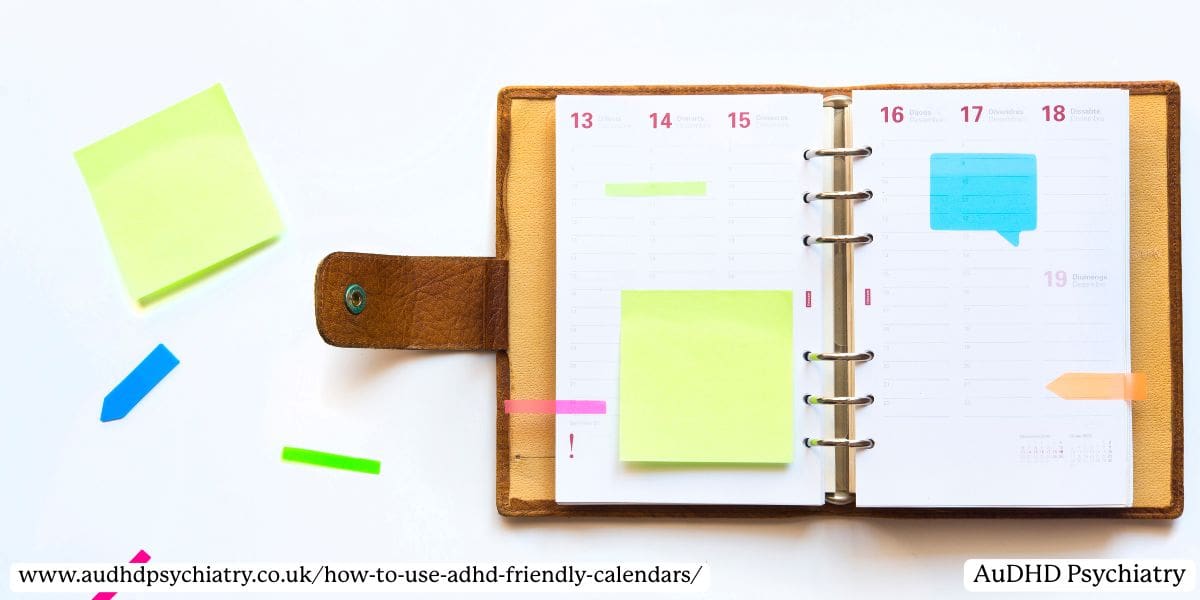
Why Use a Daily Planner or Calendar If You Have ADHD?
Using a daily planner is not just a productivity tactic. It’s also practical support for managing the cognitive challenges that often accompany ADHD. These tools help externalise information, reduce decision fatigue, and provide needed structure.
Supporting Cognitive Function and Reducing Stress
For individuals with ADHD, a daily planner acts as an anchor. It aids in sequencing tasks, regulating focus, and managing time blindness, which is a common difficulty where the passage of time feels distorted. Tools that support time management and task management help relieve the mental burden of holding everything in your head.
Promoting Productivity Through External Structure
Calendars and planners offer visual structure and accountability. They help individuals move from reactive to proactive behaviour, supporting productivity even when motivation or focus is inconsistent. Whether it’s a paper planner or a digital system, this external framework can simplify daily routines and improve consistency.
Tools like planners work best when part of a broader support strategy. When paired with medical and behavioural approaches, they can reduce stress and increase autonomy.
How to Choose a Daily Planner or ADHD-Friendly Calendar
Selecting the right calendar or planner is a personal decision. The most effective systems are those tailored to an individual’s lifestyle, preferences, and cognitive patterns.
Features That Support ADHD-Specific Needs
Look for tools that include ADHD-specific features such as visual reminders, colour-coded sections, and space for goal setting. These elements reduce cognitive overload by clearly outlining tasks, due dates, and transitions. Whether choosing a physical planner or digital app, ensure it includes the flexibility to adjust as your schedule or needs evolve.0
Practical Considerations for Daily Use
Effective calendar setup includes both function and usability. Consider your routine. Do you need something portable? Do you benefit from alarms or recurring reminders? Planners that integrate with apps like Google Calendar can provide layered support across devices and contexts.
Above all, the best planner for ADHD is the one that aligns with your real-world needs and that you can use consistently without frustration. For additional strategies on improving focus and productivity, our article on The Pomodoro Technique for ADHD explores time management techniques tailored for ADHD.
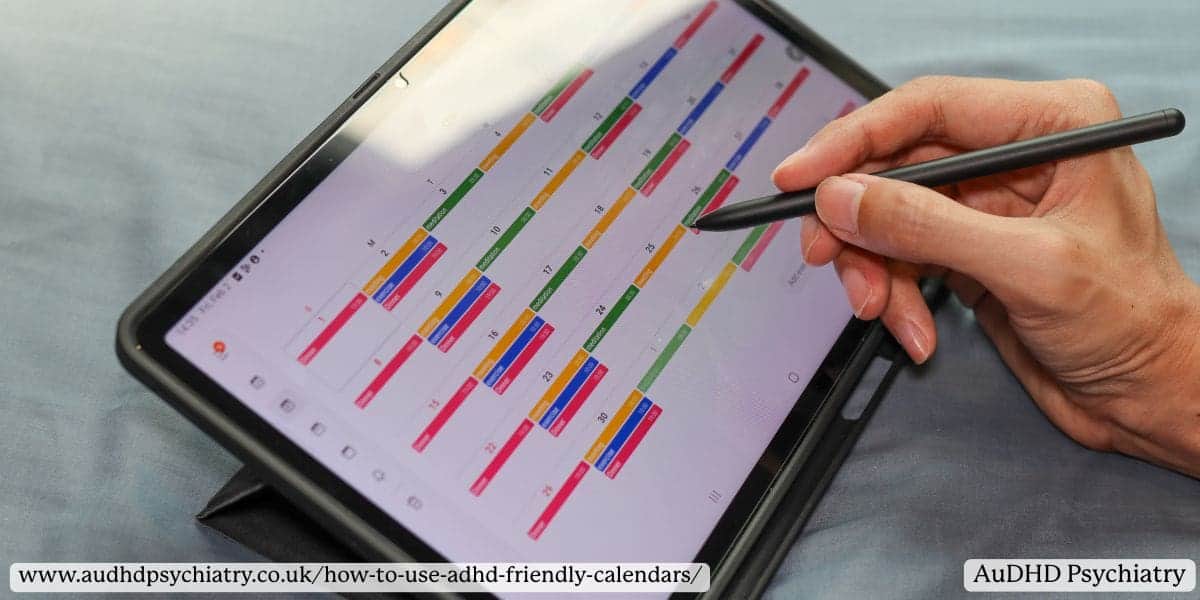
How to Use ADHD-Friendly Calendars Effectively
Implementing an ADHD-friendly calendar involves more than just selecting the right tool; it’s about establishing a system that complements your cognitive patterns and daily routines. This section provides practical strategies to optimise your calendar usage.
Establishing a Consistent Planning Routine
Consistency is key. Begin by designating a specific time each day to review and update your calendar. This habit helps in reinforcing routines and provides a clear glance at upcoming tasks and appointments. Regular check-ins can mitigate the effects of time blindness and enhance task initiation.
Utilising Visual Cues and Colour Coding
Visual aids can significantly improve information retention and task management. Employ colour coding to differentiate between various activities such as work, personal tasks, and appointments. Incorporating symbols or icons can also serve as quick reminders, making it easier to process and prioritise information.
Incorporating Time Blocking Techniques
Time blocking involves separating specific time slots for different tasks or categories of work. This method can help in managing attention and reducing decision fatigue. By assigning dedicated periods for focused work, breaks, and administrative tasks, you create a structured yet flexible schedule that accommodates the ADHD brain’s need for variety and movement.
Setting Realistic Goals and Priorities
Break down broader tasks into smaller, manageable steps. This approach does not only makes tasks seem less daunting but also provides a sense of accomplishment as each step is completed. Prioritise tasks by considering their urgency and importance, and be mindful of not overloading your schedule, allowing space for unexpected events or necessary rest.
Leveraging Digital Tools and Reminders
Digital calendars offer features such as automated reminders, recurring events, and synchronisation across devices. Utilise these functionalities to stay on track with deadlines and appointments. Setting up alerts for upcoming tasks can serve as external prompts, aiding in improving poor time management and task completion.
By integrating these strategies, your calendar becomes a supportive tool that aligns with your unique needs, enhancing productivity and reducing overwhelm.
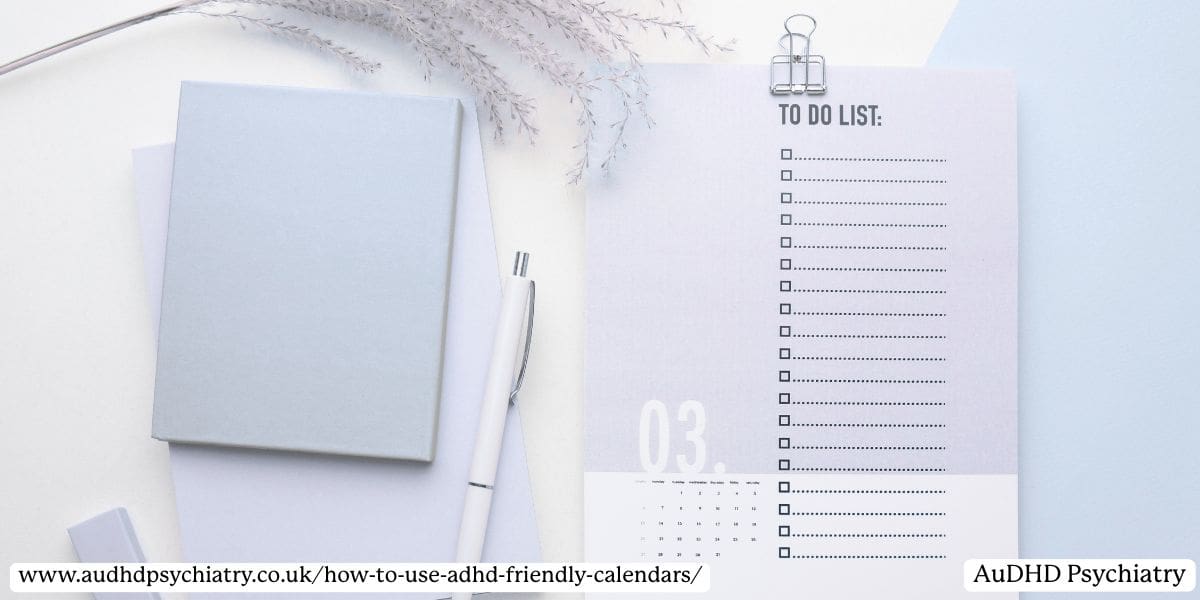
What to Write in Your ADHD-Friendly Planner or Calendar
Having clarity on what to write about can be just as important as remembering to use your planner. ADHD-friendly calendars work best when you document both external obligations and internal priorities, giving your brain structure and space to function.
Appointments With Other People
Start by listing fixed appointments such as meetings, social events, school runs, and medical visits. These external commitments provide a scaffold for the rest of your day and reduce last-minute scrambling. Use colour-coded sections to visually distinguish between work and personal obligations, and include reminders for travel time or prep steps. Apps like Google Calendar or other ADHD calendar apps allow you to add recurring events, which can save time and reduce cognitive load.
Appointments With Yourself
Just as important as meetings with others are the ones you have with yourself. Block time for self-care, regular breaks, focused work, and even rest. These specific tasks help anchor your day while supporting habit tracking and goal setting. For those struggling with motivation or decision fatigue, planning downtime is essential.
Use your planner to capture activities that may seem minor but impact your mental health, including meals, walks, or journaling. Over time, these small entries reinforce consistent routines and support better daily planning.
Common Challenges and How to Overcome Them
Implementing an ADHD-friendly calendar can be transformative, yet it’s essential to acknowledge and address common obstacles that may arise during this process.
Navigating Time Blindness
Time blindness, a prevalent symptom among individuals with ADHD, refers to the difficulty in perceiving the passage of time accurately. This can lead to missed appointments or deadlines. To combat this, consider utilising visual timers and setting multiple alarms as reminders. Incorporating these tools into your day-to-day routine can enhance time awareness and punctuality.
Managing Overwhelm and Task Paralysis
The accumulation of tasks can often lead to feelings of overwhelm, resulting in task paralysis. Dividing larger tasks into smaller, more achievable action points can alleviate this pressure. For more strategies on overcoming task paralysis, refer to our article on Simple ADHD-Friendly Techniques to Beat Task Paralysis.
Adapting to Unexpected Changes
Flexibility is crucial when unexpected events disrupt your planned schedule. Building buffer times into your calendar can provide the necessary space to accommodate unforeseen circumstances without derailing your entire day.
What Are the Benefits of an ADHD Planner or Calendar?
An ADHD-friendly planner offers more than surface-level organisation. For many adults with ADHD, it becomes an essential support system, one that helps manage executive dysfunction, reduce overwhelm, and bring a sense of stability to the day. Rather than relying solely on memory or moment-to-moment focus, a good planner helps externalise thoughts and tasks, offering clarity and structure in real time.
Here are some of the most important benefits of using a planner or calendar tailored to ADHD needs:
- Improved Executive Function
Writing down tasks and schedules helps lessen cognitive strain. This external framework supports planning, prioritisation, and initiating tasks, which are areas often impacted by ADHD.
- Greater Routine and Consistency
A structured planner can help stabilise routines, even when attention or motivation fluctuates. Repetition builds reliability, making daily habits easier to maintain.
- Reduced Mental Load
With tasks clearly outlined, there’s less need to mentally juggle to-dos. This leads to better focus and fewer distractions during the day.
- Lower Anxiety and Stress
Knowing what’s coming next can significantly reduce the stress that stems from uncertainty or forgotten obligations.
- More Visible Progress
Tracking completed tasks or milestones provides tangible proof of progress, which can boost motivation and self-esteem.
For more practical strategies to support ADHD-related challenges, visit our ADHD Resources & Tools page. A planner alone won’t solve every organisational struggle, but when used consistently, it can become a powerful anchor in your ADHD toolkit, especially when combined with other strategies discussed throughout this guide.
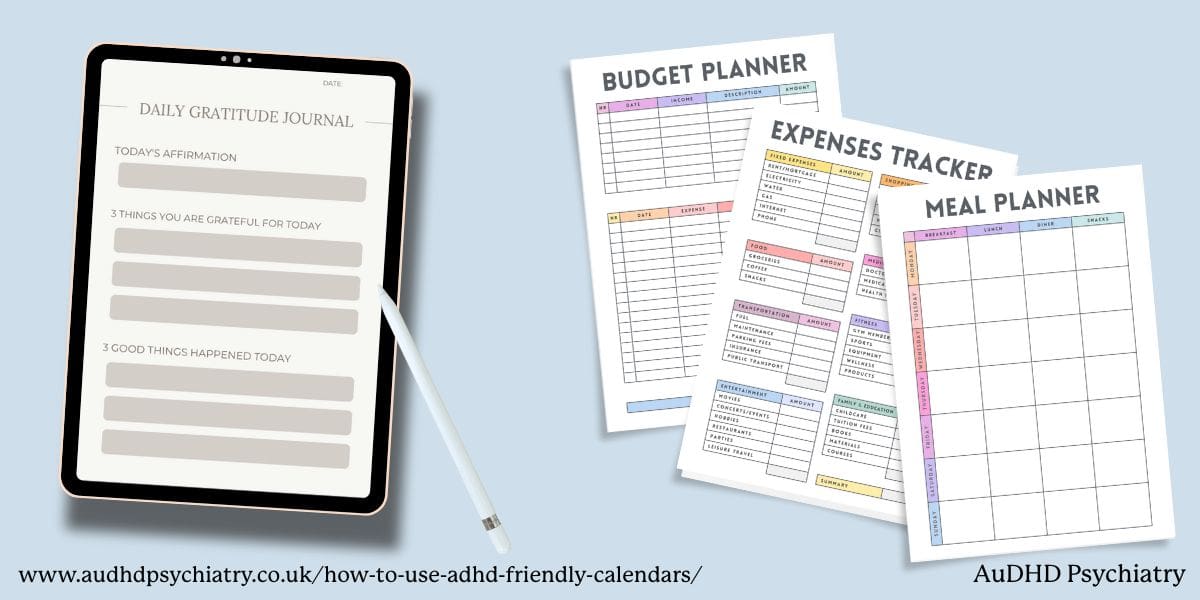
Physical vs. Digital Planner: Choosing What’s Right for Your ADHD Brain
When it comes to ADHD planning, there’s no universal solution, only what works best for your brain. One of the most important decisions is whether to use a physical planner, a digital calendar, or a combination of both. Each format offers unique strengths, and the best choice often depends on your lifestyle, sensory preferences, and level of tech comfort.
Why Choose a Physical Planner?
For many individuals with ADHD, the tactile experience of writing by hand can enhance focus, memory, and engagement. A paper-based daily ADHD planner allows for visual tracking, doodling, colour-coding, and flexible layouts without digital distractions. The physical act of crossing off a completed task can also offer a small but meaningful dopamine boost.
Additionally, planners for ADHD adults often come in varied formats: weekly layouts, hourly breakdowns, habit trackers that you can physically flip through, which can reinforce structure and support executive function. For some, the visual and tangible aspect of a calendar reduces cognitive overload in a way that screens can’t.
Why Opt for a Digital Planner?
On the other hand, a digital planner for ADHD offers unmatched convenience. The best ADHD calendar apps include features like recurring reminders, calendar syncing across devices, drag-and-drop rescheduling, and integration with productivity tools. These features are especially valuable for users who need mobility or frequently revise plans.
Digital formats also work well for managing shared calendars, such as those used by partners, caregivers, or teachers supporting a calendar for ADHD child planning. Cloud access ensures that your schedule is always within reach.
Can You Use Both?
Absolutely. Many people benefit from a hybrid system. For example, you might use a digital planner for scheduling appointments and setting notifications, while your paper planner becomes a space for reflection, goal-setting, and breaking down tasks.
Whichever format you choose, consistency is key. Start small, test what works, and adapt as needed, because the best planner is the one you’ll actually use.
Crafting Your Ideal ADHD Planner or Calendar
A well-structured planner serves as more than just a scheduling tool; it acts as an external support system that aligns with the unique cognitive patterns associated with ADHD. Tailoring your planner to your specific needs can significantly enhance its effectiveness.
![]()
Identifying Your Organisational Priorities
Begin by assessing which aspects of planning present the most challenges. Be it remembering appointments, estimating time accurately, or transitioning between tasks. Once identified, customise your planner accordingly. For instance, incorporating visual elements such as colour-coded time blocks or task categories can make abstract plans more tangible.
Incorporating visual cues, flexible layouts, and non-linear formats can help make your planner more intuitive. This improves ease of use and encourages long-term engagement.
Incorporating Planning Elements That Support ADHD
An ADHD-friendly planner should encompass more than just schedules. Consider integrating habit trackers, weekly reflection prompts, or space for goal planning. These features reinforce consistency and facilitate the connection between daily actions and long-term objectives.
Helpful elements to include:
- Habit trackers – Reinforce daily or weekly behaviours to build consistency over time
- Weekly reflection prompts – Encourage metacognition and help evaluate what worked and what didn’t
- Goal-setting pages – Break long-term goals into manageable steps with visual cues
- Mood tracking or energy level charts – Support emotional regulation and self-awareness
- Flexible layouts – Allow customisation for shifting schedules, prioritisation, and ADHD-friendly time blocking
- Visual aids and colour-coded sections – Improve task recall and reduce cognitive overload
- Sections for brain dumps – Provide space to offload scattered thoughts without structure
- “Done” lists – Help track achievements and combat feelings of underproductivity
You may also find it beneficial to combine visual layouts with written prompts that encourage progress over perfection. Adaptability is essential; your planner should evolve with your lifestyle and cognitive needs.
Tools and Aids to Reinforce Planner Use
To improve consistency, pair your planner with tools such as digital timers, sticky notes, or accountability reminders. Physical visibility is also crucial in keeping your planner in sight and can significantly increase usage. Whether digital or paper-based, the goal is to create a reliable external system that aligns with how your brain works.
Pro Tips for Staying Consistent With Your ADHD Calendar
Building a calendar system is one thing, and using it consistently is another. For many individuals with ADHD, the real challenge lies in maintaining momentum. Even the best ADHD planner app or physical notebook can be forgotten if it’s not woven into your daily routine. These practical strategies are designed to make your calendar feel less like a chore and more like a useful, accessible tool.
Do a Quick Planning Session Daily
Consistency starts with a habit. Set aside just five to ten minutes at the same time each day, perhaps in the morning or before bed, to update your calendar and review your to-do list. This simple practice helps you recalibrate priorities and stay on track with daily planning.
Use your home screen or a visible area in your living space as a reminder prompt. Keeping your ADHD planner app open or placing a visual calendar where you’ll see it daily can help reinforce this habit without relying on memory alone.
Keep It Visible and Write in Pencil
If you’re using a physical day planner or ADHD weekly planner, visibility matters. Keep it in a central place like your desk, kitchen counter or bedside table. This reduces out-of-sight, out-of-mind tendencies that often affect ADHD users.
Writing in pencil allows for flexibility, which is especially useful if your plans shift frequently. Use colour coding or visual cues to help quickly identify types of tasks, appointments, or self-care blocks. These small adaptations can make your system feel less rigid and more ADHD-friendly.
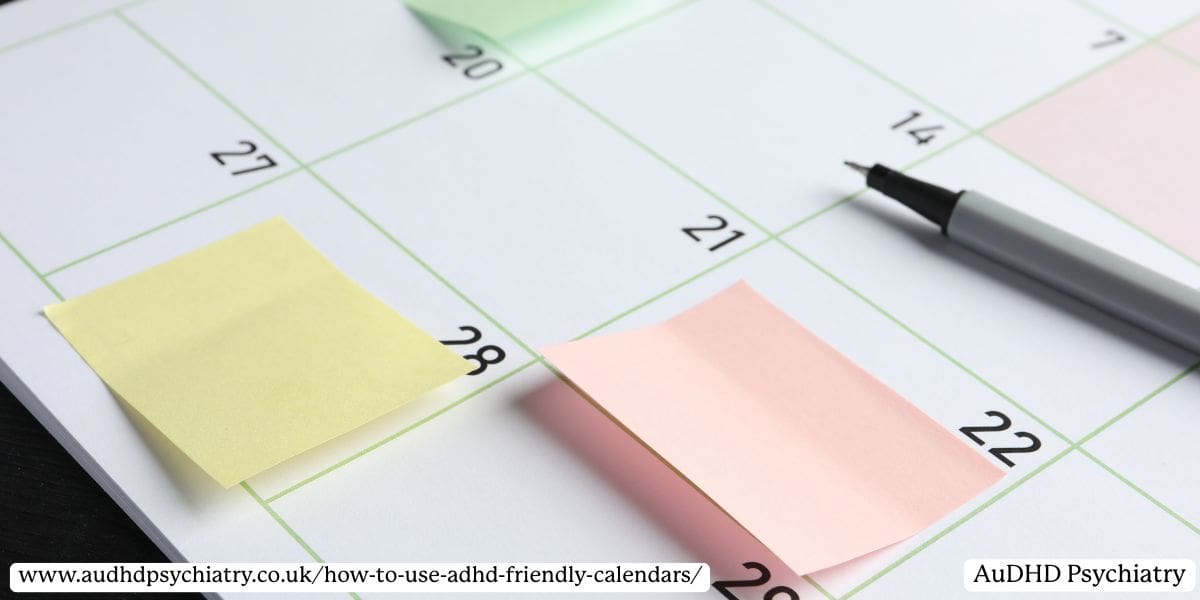
Use Visual Reminders and Sticky Notes
Sticky notes, wall calendars, and whiteboards can act as external cues that keep you grounded in time. They’re great for capturing upcoming tasks and daily activities, particularly when focus is scattered.
Many people also benefit from pairing these physical reminders with digital tools. For instance, setting reminders in your ADHD planner app alongside a sticky note at eye level gives you dual reinforcement. As mentioned in our article on managing ADHD in the workplace, combining strategies can make your environment work with your brain rather than against it.
Build Momentum, Not Just a Routine
Consistency with an ADHD calendar means building momentum, finding small actions that support your focus and make daily life more manageable. The real value of a planner isn’t in how full the pages are, but how well it helps you stay grounded and feel less overwhelmed.
Start with one or two strategies that genuinely suit your lifestyle. Maybe it’s setting a gentle reminder each morning to check your planner, or keeping a sticky note on your laptop that nudges you to review tomorrow’s schedule. These touchpoints don’t have to be rigid. In fact, flexibility often works better for ADHD brains than strict rules do.
Celebrate the days you follow through, and be kind to yourself on the days you don’t. Habits take time, and your calendar is there to support you, not judge you. It should feel like a tool that reduces mental clutter and gives you space to focus on what matters.
When your calendar system reflects your real needs and energy levels, it stops being another task on your to-do list. Instead, it becomes something you trust: a quiet, consistent support in your everyday routine.
How to Use ADHD Friendly Calendars: Conclusion
Choosing the right ADHD planner or calendar is not about following one method. It’s about building a system that supports your way of thinking, planning, and managing daily life. Regardless if you prefer a physical notebook, a digital app, or a mix of both, the goal is the same: to make everyday tasks feel more manageable and less overwhelming.
We’ve covered how ADHD-friendly planners can support executive function, reduce stress, and encourage consistency. From visual reminders and habit tracking to daily planning sessions and external tools, each element plays a role in helping you stay focused and organised. What matters most is finding a rhythm that feels sustainable and fits your real life.
You don’t need to figure this out alone. If you’re looking for individualised support better to understand your focus, routines, and needs, we’re here to help. Book a private ADHD assessment to gain clarity, receive expert guidance, and take the next step toward building systems that work with your brain, not against it.

